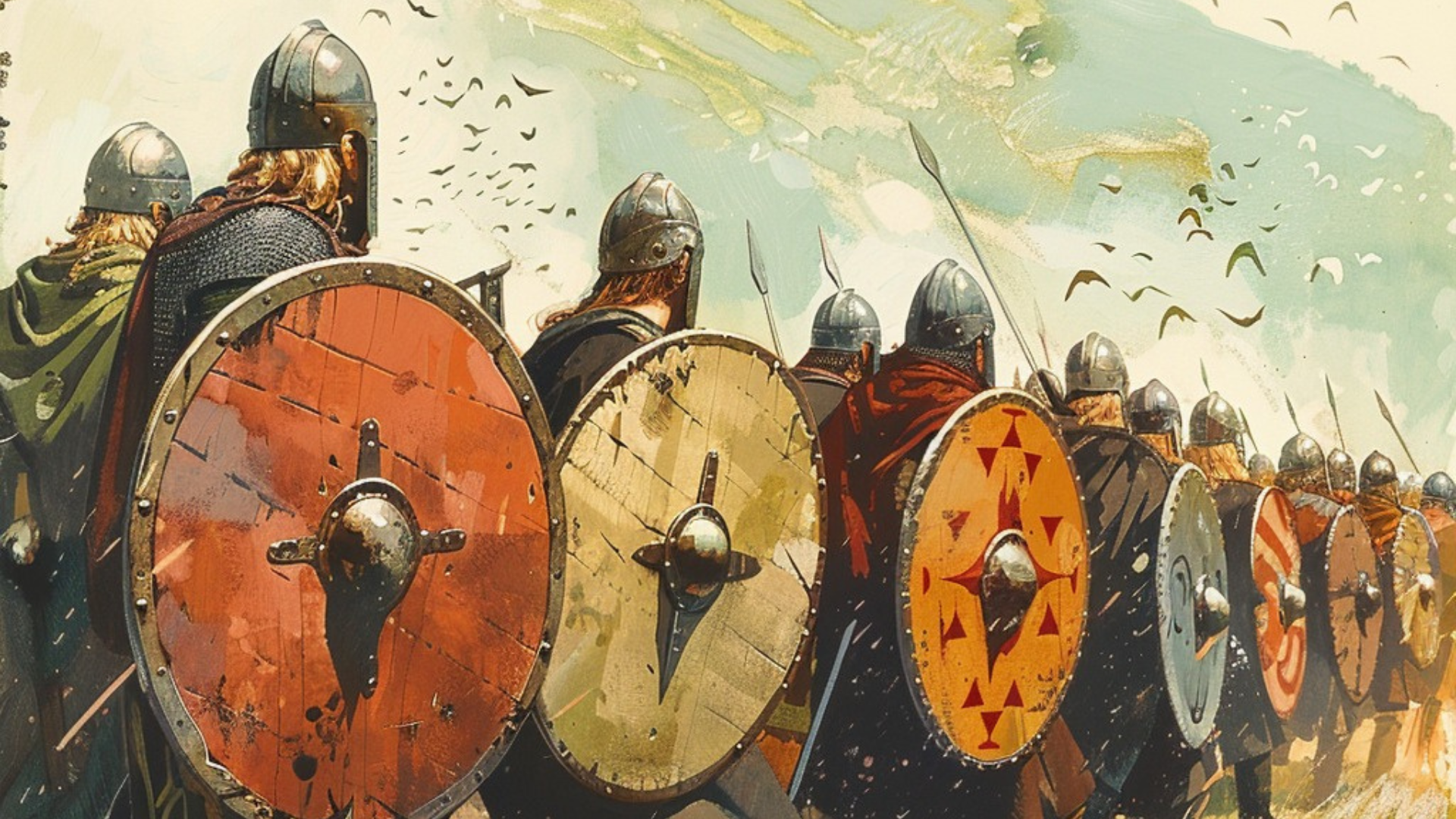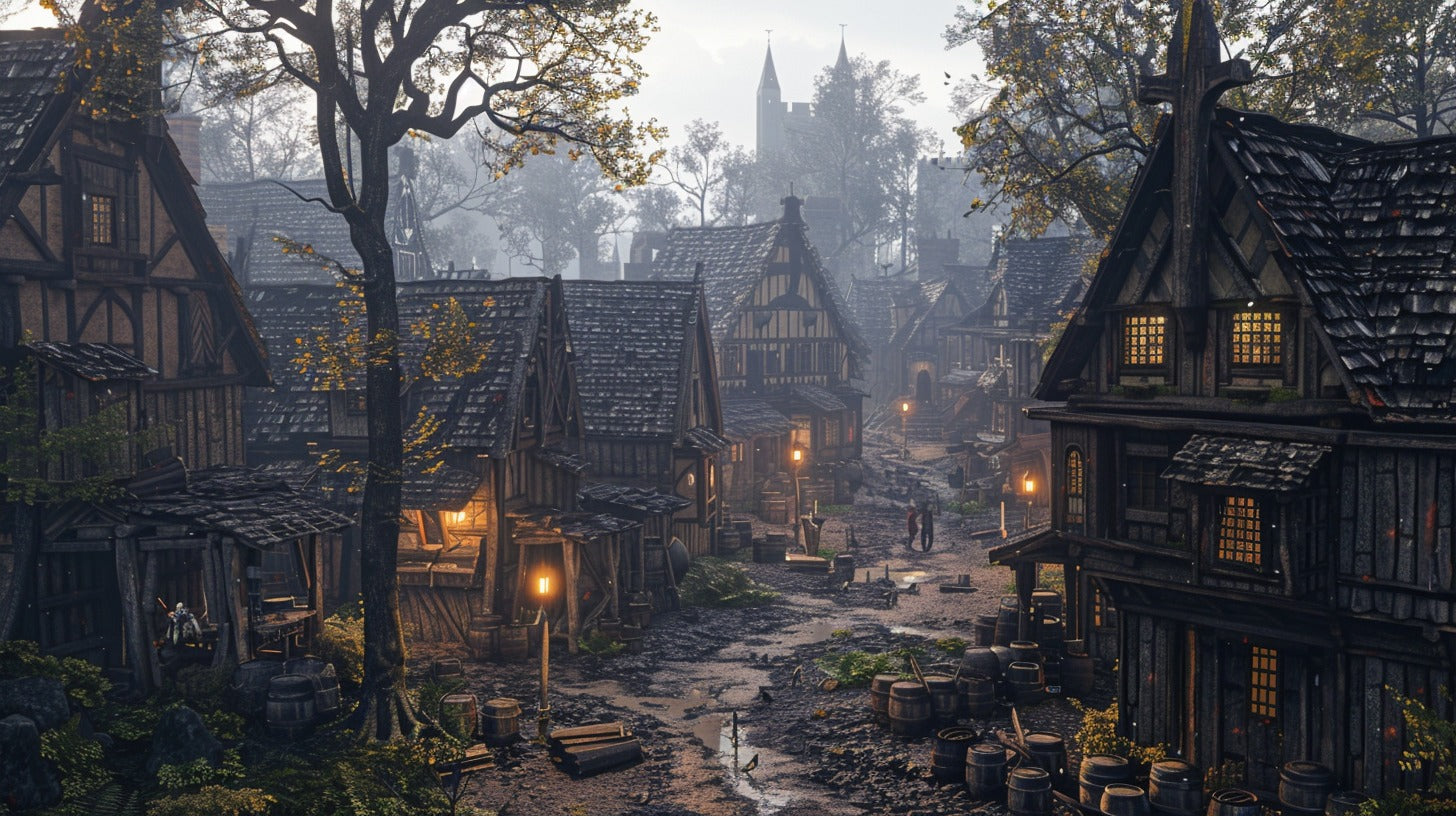
The Great Heathen Army: Scourge of England
Imagine a time when the tranquil shores of England were disrupted by the arrival of fearsome Viking warriors. This isn't a scene from a fantasy novel but a vivid chapter from history—the tale of the Great Heathen Army. This formidable force, comprising thousands of Norse warriors, descended upon England in the late 9th century, leaving an indelible mark on the land and its people. But who were these invaders, and what drove them to embark on such a monumental campaign? Let's dive into the captivating story of the Great Heathen Army.
Setting the Stage: 9th Century England
To understand the impact of the Great Heathen Army, we need to first picture 9th century England. The land was divided into several kingdoms—Northumbria, Mercia, Wessex, and East Anglia, each with its own ruler and often engaged in conflicts. This fragmentation made England a tempting target for external forces, especially the Vikings, who were already notorious for their raids across Europe.
Who Were the Vikings?
The Vikings were seafaring Norse people from Scandinavia (modern-day Denmark, Norway, and Sweden). Renowned for their exploration, trading, and raiding, they had a reputation for being fierce warriors. By the 9th century, they had already made their presence felt in various parts of Europe, including the British Isles, through sporadic raids. However, the arrival of the Great Heathen Army marked a significant escalation from these earlier incursions.
Historical Background

Prelude to Invasion
Before the Great Heathen Army set its sights on England, the Vikings had already made their presence felt. Raids on monasteries, like the infamous attack on Lindisfarne in 793, instilled fear across the land. England, a patchwork of warring kingdoms, presented a ripe target for a united Viking force looking for more than just plunder.
The Formation of the Great Heathen Army

Ælla's execution of Ragnar Lodbrok by Hugo Hamilton (Public Domain)
The Catalyst: Ragnar Lothbrok's Death
Legend has it that the formation of the Great Heathen Army was sparked by the death of the legendary Viking chieftain Ragnar Lothbrok. According to the sagas, Ragnar was captured by King Ælla of Northumbria and thrown into a pit of snakes, where he met a gruesome end. This brutal execution allegedly enraged his sons, who vowed to avenge their father's death, leading to the assembly of a massive Viking force.
Leaders of the Army
The Great Heathen Army didn’t just form overnight. It was a well-organized campaign led by some of the most renowned Viking chieftains. Chief among them were the sons of Ragnar Lothbrok, a legendary Viking hero. Ivar the Boneless, Halfdan Ragnarsson, and Ubba were key figures, each bringing their own brand of leadership and ferocity to the battlefield.
Ivar the Boneless
Ivar the Boneless, known for his strategic brilliance and ruthless nature, is perhaps the most famous of Ragnar's sons. Despite the mystery surrounding his nickname—whether it referred to a physical disability or his serpent-like agility—Ivar played a crucial role in the army's successes.
Halfdan Ragnarsson
Halfdan Ragnarsson, another of Ragnar's sons, was a significant leader within the Great Heathen Army. He was instrumental in various military campaigns and later became a king in his own right, ruling over Northumbria.
Ubba Ragnarsson
Ubba (or Ubbe), often portrayed as the fiercest of Ragnar's sons, was a key figure in the early stages of the invasion. His leadership and warrior skills contributed to several important victories for the Vikings.
Motivations for the Invasion
What drove these warriors to launch such a massive invasion? The motives were a mix of revenge, wealth, and ambition. According to sagas, they sought to avenge the death of Ragnar Lothbrok, who had been executed by King Ælla of Northumbria. Beyond vengeance, the promise of land, wealth, and power in the rich English territories was too tempting to resist.
The Invasion of England

The Initial Landing
The Great Heathen Army landed in East Anglia in 865 AD. Unlike previous Viking raids, which were hit-and-run affairs, this invasion was characterized by its scale and intent. The Vikings sought not just to plunder but to conquer and settle. The East Anglian king, recognizing the threat, chose to make peace and supply the Vikings with horses, which they used to launch their next offensive.
The Capture of York
From East Anglia, the Great Heathen Army moved north and captured York in 866 AD. This was a significant victory, as York (then called Eoforwic) was one of the most important cities in England. The fall of York sent shockwaves through the English kingdoms, demonstrating the might of the Viking force and the vulnerability of the English.
Major Battles
One of the earliest significant clashes was the Battle of York in 866. The Vikings captured the city of York, a major victory that established their dominance in Northumbria. Over the next few years, they continued their conquests, battling with the kingdoms of Mercia and Wessex. Each battle showcased their strategic prowess and unyielding ferocity.
Key Victories
The capture of York was just the beginning. The Battle of Repton in 873 was another turning point. Here, the Vikings defeated King Burgred of Mercia, forcing him into exile. They established a winter camp at Repton, consolidating their control over Mercia. Victories like these not only expanded their territory but also demoralized their enemies.
Expansion and Conquest

Map of The Great Heathen Army's conquest
The Battle of Ashdown
The Vikings continued their campaigns, and one of the notable clashes was the Battle of Ashdown in 871 AD. This battle saw the forces of Wessex, led by King Æthelred and his brother Alfred (later known as Alfred the Great), confront the Viking army. Although the battle was hard-fought, the English managed to secure a victory, temporarily halting the Viking advance.
The Conquest of Mercia

Viking sword discovered in Repton, Mercia
Despite setbacks, the Great Heathen Army pressed on. They turned their attention to Mercia, one of the key kingdoms in England. After several years of conflict, they succeeded in subduing Mercia, further expanding their control over English territories.
Establishment of the Danelaw
One of the most lasting impacts of the Great Heathen Army's invasion was the establishment of the Danelaw. This term refers to the areas of England where Danish law and customs were observed, essentially regions under Viking control. The Danelaw covered much of northeastern and eastern England and became a significant cultural and political entity.
Impact on England

Map of Danelaw during 878
Political Changes
The arrival and actions of the Great Heathen Army brought significant political upheaval. Several English kings were dethroned, and puppet rulers loyal to the Vikings were installed. The power dynamics shifted, with some regions falling under direct Viking control, known as the Danelaw, where Danish laws and customs prevailed.
The Influence on Culture
The Viking influence wasn’t limited to politics. They left a lasting cultural impact, introducing new technologies, agricultural practices, and even words into the English language. Place names with Scandinavian roots, like those ending in “-by” (meaning village), are a testament to their legacy.
The cultural impact of the Vikings is evident in various aspects of English life. From place names to language and art, the Norse influence permeated English culture. Many English words have Old Norse origins, and the Viking legacy is still celebrated in modern times through festivals and historical reenactments.
Resistance and Counterattacks

Statue of Alfred the Great, Winchester
English Kings and Nobles
Not all English leaders succumbed to the Viking onslaught. Figures like King Alfred the Great of Wessex emerged as staunch defenders of the Anglo-Saxon realms. Alfred, in particular, became legendary for his guerrilla warfare tactics and strategic acumen, which kept Wessex from falling completely under Viking control.
Major Counteroffensives
The resistance was fierce and at times successful. Alfred’s victory at the Battle of Edington in 878 was pivotal. He forced the Viking leader Guthrum to surrender and convert to Christianity, leading to a treaty that divided England between the Anglo-Saxons and the Vikings. This moment marked a significant turning point in the struggle for control of England.
The Decline of the Great Heathen Army
Internal Conflicts
Despite their early successes, the Great Heathen Army eventually began to unravel. Infighting among the Viking leaders weakened their cohesion. Disputes over spoils, leadership, and strategy caused rifts that their enemies could exploit.
Retreat and Dissolution
Over time, the momentum of the Great Heathen Army slowed. They faced stiffer resistance from the English and struggled with the challenges of ruling the conquered territories. By the end of the 9th century, the once fearsome army had largely dissipated, with many of its members assimilating into the local populations or returning to Scandinavia.
Legacy of the Great Heathen Army
Historical Significance
The Great Heathen Army’s legacy is profound. They were instrumental in shaping medieval England’s political landscape. The turmoil they caused accelerated the unification of the English kingdoms under a central authority, paving the way for the England we know today.
Influence on Modern Culture
The exploits of the Great Heathen Army have captured the imagination of countless generations. From historical novels to TV series like “Vikings,” their story continues to fascinate. The cultural exchange they initiated left an indelible mark on English society, one that can still be seen and felt in various aspects of modern life. The blending of Norse and Anglo-Saxon traditions created a rich tapestry of cultural heritage that has influenced language, legal systems, place names, and even modern-day customs and traditions.
Conclusion
The saga of the Great Heathen Army is a thrilling chapter in the annals of history. It’s a story of ambition, conquest, and transformation that has left an enduring legacy. The Vikings, with their formidable Great Heathen Army, didn’t just invade England; they changed it forever. Their influence, whether through battle or cultural integration, helped shape the nation's future. So next time you hear about Vikings, remember they were more than just raiders; they were pivotal players in the grand historical tapestry of England.
References
Repton Sword By Roger from Derby, UK - Derby Museum Viking Sword, CC BY 3.0, https://commons.wikimedia.org/w/index.php?curid=15191526
Great Heathen Army Map By Hel-hama - Own work, CC BY-SA 3.0, https://commons.wikimedia.org/w/index.php?curid=20042870
By Hel-hama - Own work using:InkscapeSource: England and Wales at the time of the Treaty of Chippenham (AD 878). From the Atlas of European History, Earle W Dowe (d. 1946), G Bell and Sons, London, 1910 (see: File:England-878ad.jpg), CC BY-SA 3.0, https://commons.wikimedia.org/w/index.php?curid=19885072








